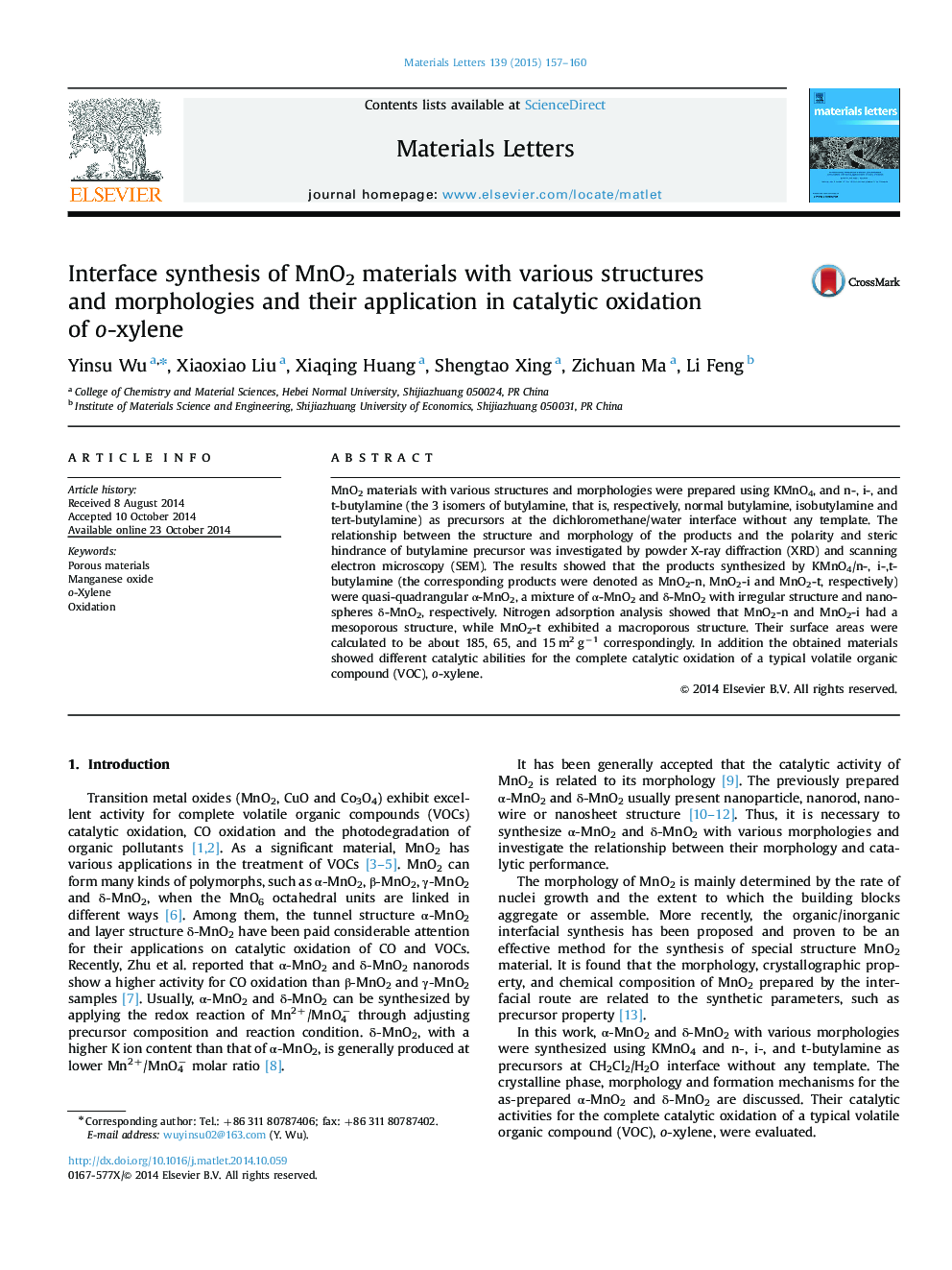| کد مقاله | کد نشریه | سال انتشار | مقاله انگلیسی | نسخه تمام متن |
|---|---|---|---|---|
| 1643543 | 1517249 | 2015 | 4 صفحه PDF | دانلود رایگان |

• MnO2 with various structures and morphologies were prepared using KMnO4/butylamine.
• The polarity and steric hindrance of butylamine isomers affect the texture of MnO2.
• The mechanism of the morphological and textural change of the materials was proposed.
• The materials possessed good catalytic activity for catalytic oxidation of o-xylene.
MnO2 materials with various structures and morphologies were prepared using KMnO4, and n-, i-, and t-butylamine (the 3 isomers of butylamine, that is, respectively, normal butylamine, isobutylamine and tert-butylamine) as precursors at the dichloromethane/water interface without any template. The relationship between the structure and morphology of the products and the polarity and steric hindrance of butylamine precursor was investigated by powder X-ray diffraction (XRD) and scanning electron microscopy (SEM). The results showed that the products synthesized by KMnO4/n-, i-,t-butylamine (the corresponding products were denoted as MnO2-n, MnO2-i and MnO2-t, respectively) were quasi-quadrangular α-MnO2, a mixture of α-MnO2 and δ-MnO2 with irregular structure and nano-spheres δ-MnO2, respectively. Nitrogen adsorption analysis showed that MnO2-n and MnO2-i had a mesoporous structure, while MnO2-t exhibited a macroporous structure. Their surface areas were calculated to be about 185, 65, and 15 m2 g−1 correspondingly. In addition the obtained materials showed different catalytic abilities for the complete catalytic oxidation of a typical volatile organic compound (VOC), o-xylene.
Journal: Materials Letters - Volume 139, 15 January 2015, Pages 157–160